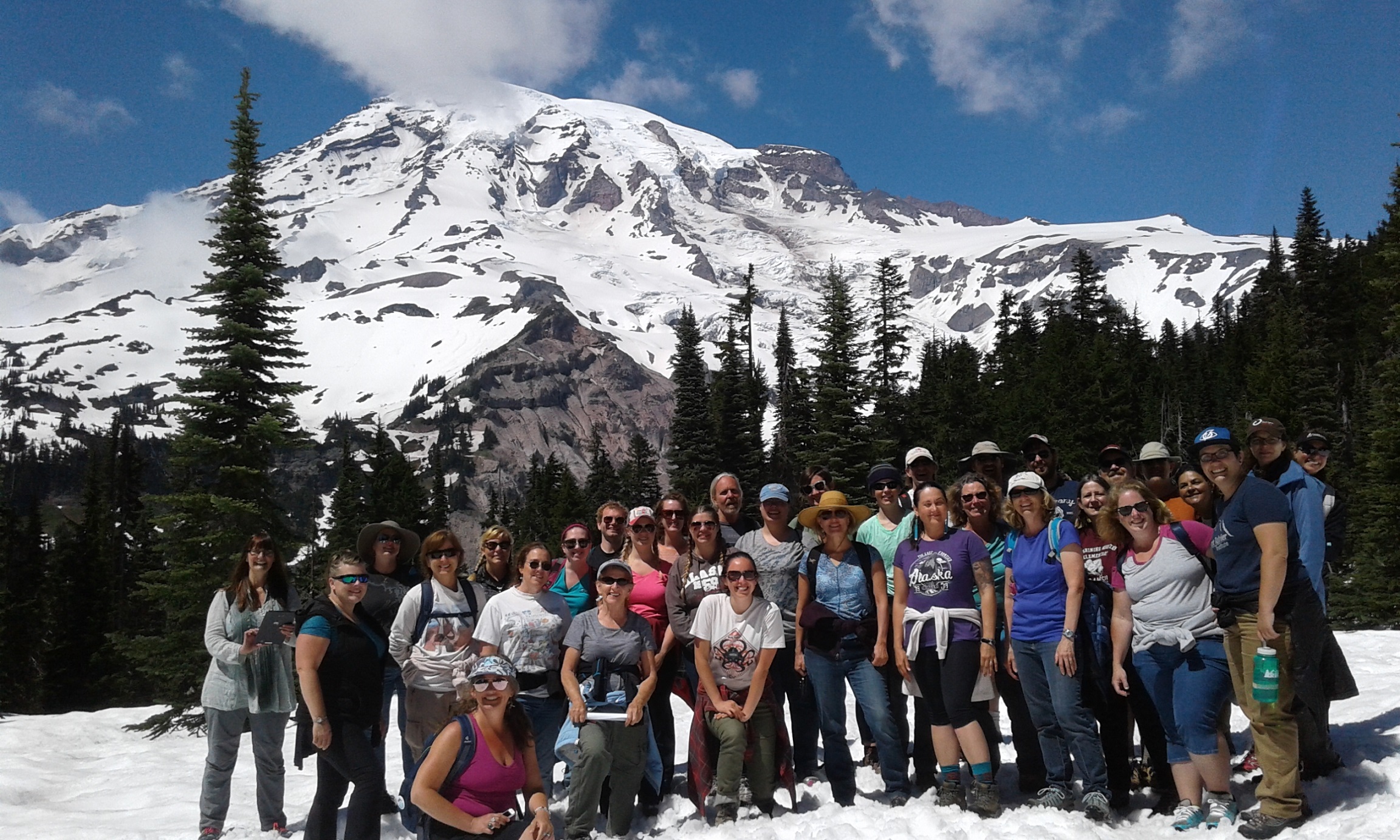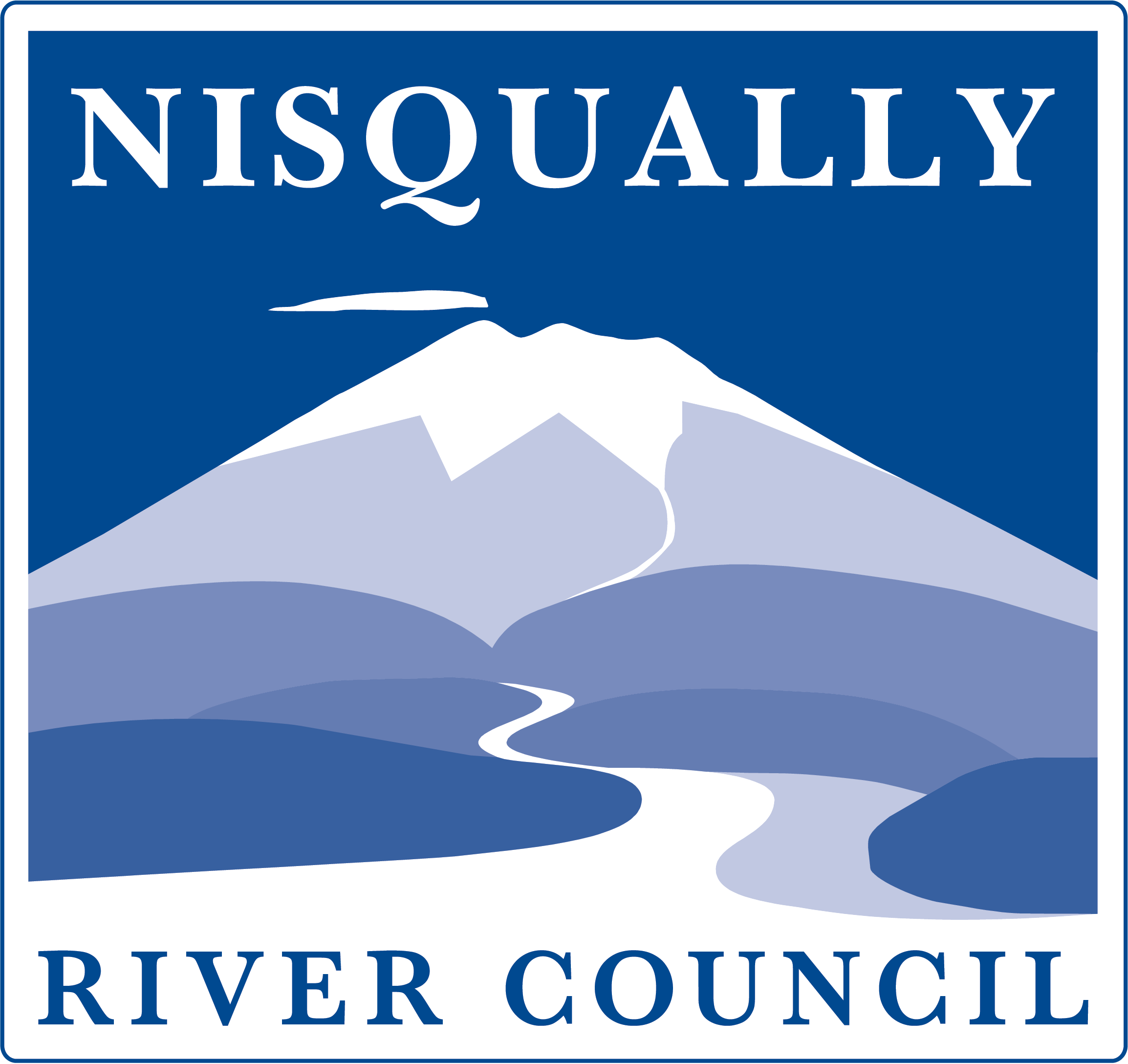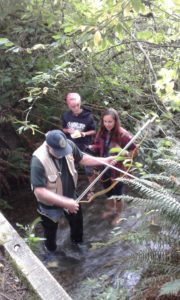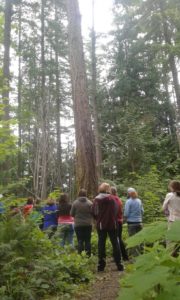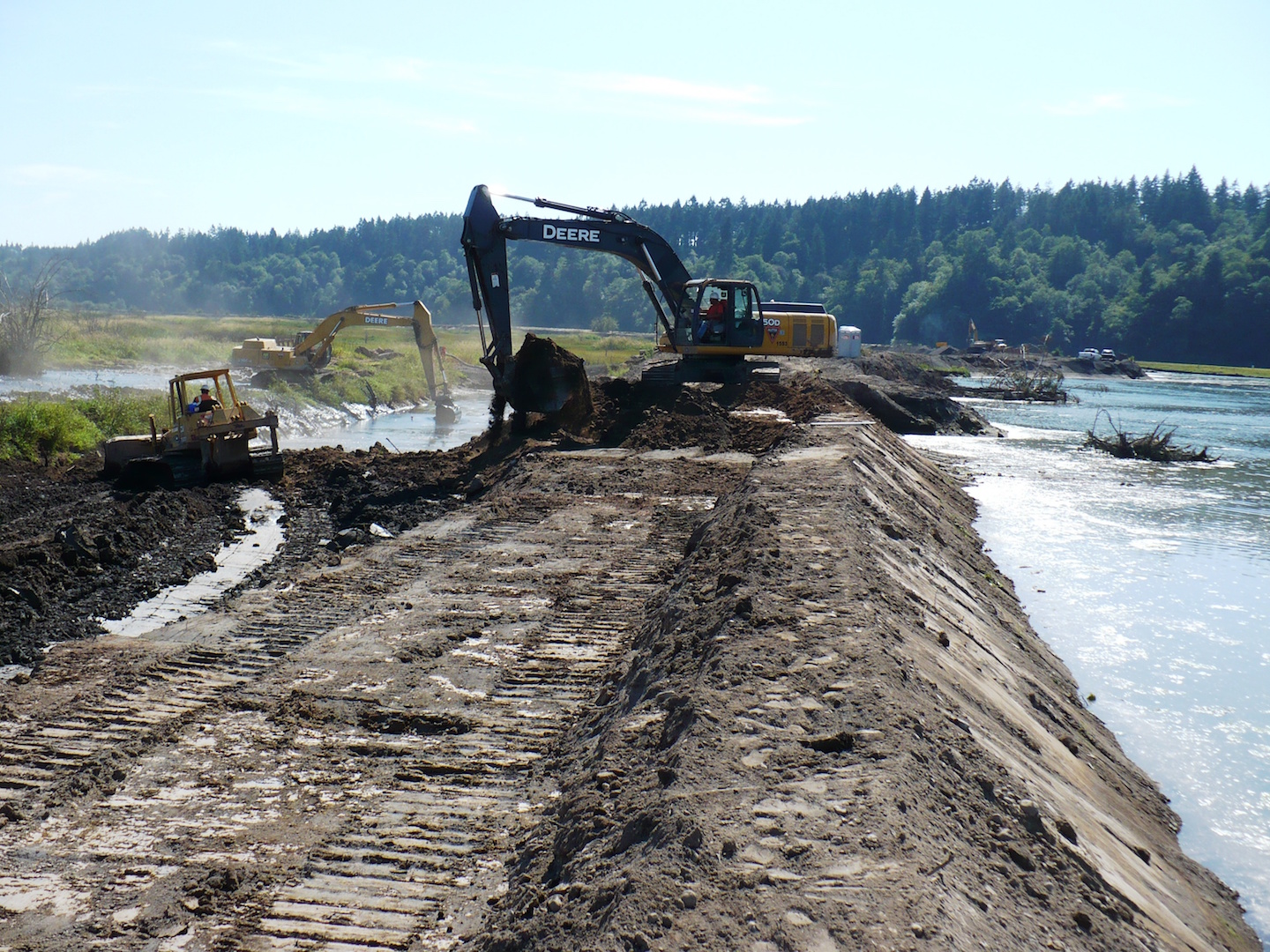Summer Teachers Institute 2017: “Climate Change in the Pacific Northwest – Glaciers, Freshwater and Forests” brought 30 teachers, 12 guest speakers and 7 staff together to take a deep dive into hands-on, experiential learning about this significant environmental issue and it’s impacts, present and future, on our watershed.
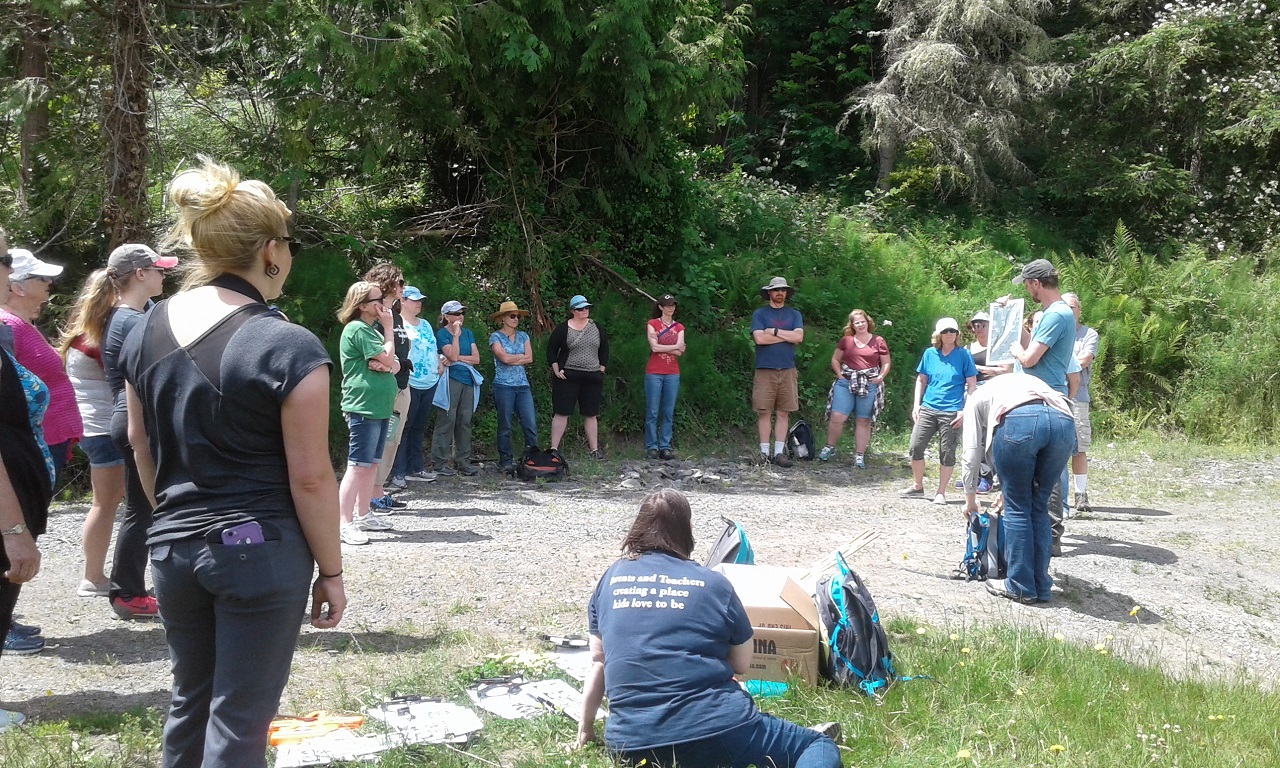
John Hayes of the Mount Rainier Institute spoke about “Carbon, Climate and Pacific Northwest Forests”, describing in detail the impact of different global ecosystems on the carbon cycle of our planet, including the particular heavy lifting of our local old growth forests. We learned how forests can be managed to maximize carbon sequestration and how the changing climate could impact our forested region. Our local NOAA partner, Casey Ralston of the NW Marine Fisheries Science Center, shared updates to NOAA’s Data in the Classroom, the release of the 3rd National Climate Assessment, and updates to Climate.gov, which includes great tutorials and teaching resources for teachers. We visited the riparian restoration site at Ohop Creek and heard from Brian Combs of South Puget Sound Enhancement Group about how the project was designed and implemented, and how the threatened Chinook and Steelhead of the Nisqually will benefit from that. The Eatonville School District was gifted the old farm buildings and surrounding few acres to start a GRUB-style program called GRITS – Growing Roots In The Soil. Tod Moorish, the on-site teacher, described this new project to our group. To wrap-up the visit, we did Survival Survey work, incorporating Native Plant ID and Next Generation Science Standards into the lessons that teachers can bring back to their classrooms.
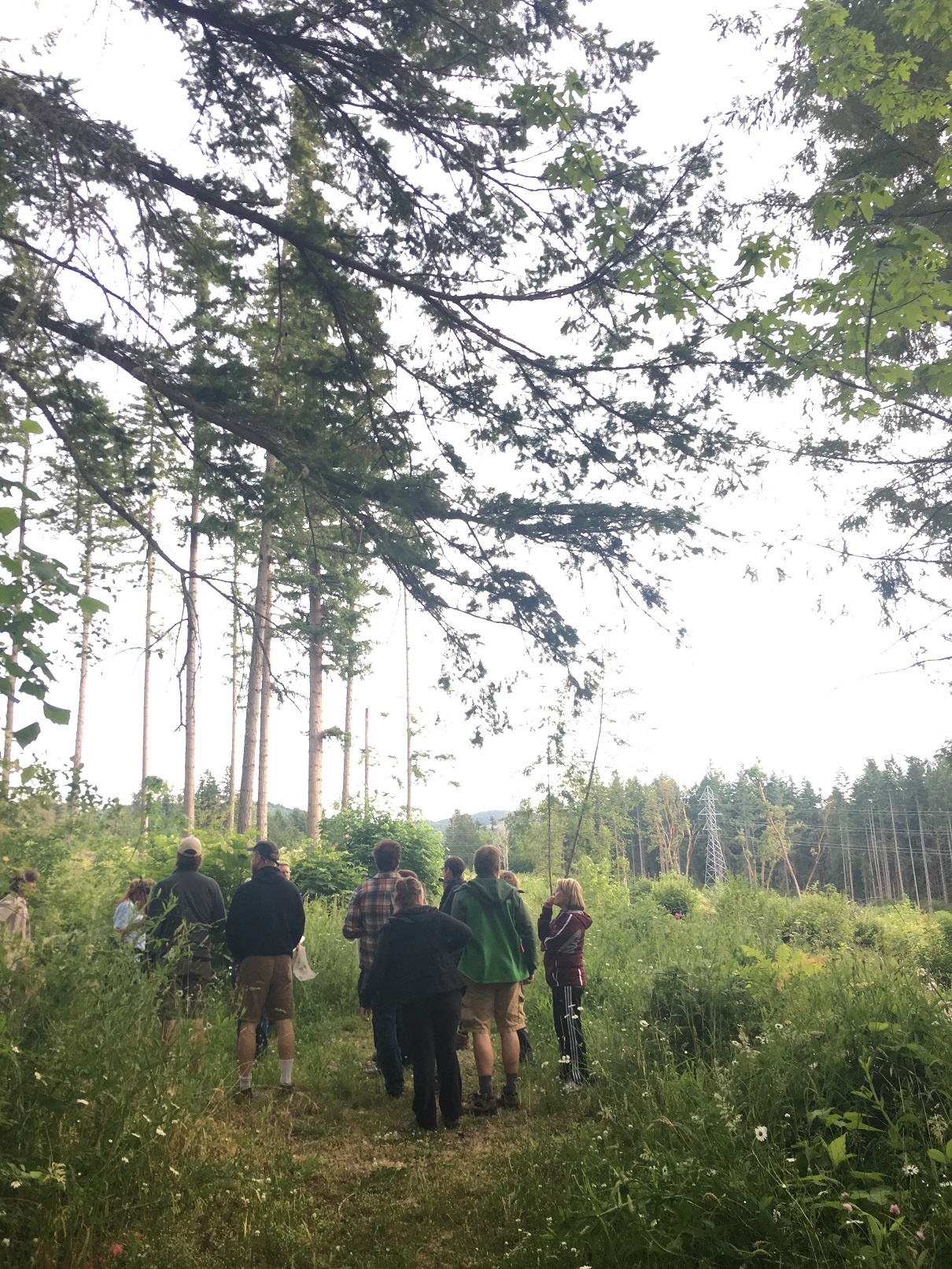
The group then travelled to University of Washington’s Center for Sustainable Forestry at Pack Forest investigating the history of that campus and playing an EcoSel game to simulate the process for decision making around forest lands: should they be preserved for nature, set aside for carbon sequestration, open for recreation, turned into housing, harvested for money, etc? There are many inherent values to our forests and this theme carried over to Day 2, where we did a timber cruise, learning simultaneously how to value a forest for it’s value in board feet and how much carbon is sequestered per tree. Followed by a hike through Pack Forest’s “Trail of Giants” in the Old Growth forest, the cultural and spiritual significance of these trees was also experienced.
Next we headed up to Paradise at Mount Rainier National Park, where the Nisqually River begins on the Nisqually Glacier. Rebecca Lofgren, park Aquatic Ecologist, shared their latest research about our local glaciers. In the last 100 years, they have decreased in surface area by 50%! This impacts the alpine ecosystems, as well as waterflows which impact the entire watershed, including potentially, water storage for hydropower. Monitoring glaciers gives us a dramatic measure of climate change and the global disruption that we are currently experiencing. She also shared the National Park Service’s “Science Learning Network”, where science and education come together to help preserve and protect areas of national significance by integrating research and education to better communicate park science to the public and other park staff.
On Day 3 Maria Mudd Ruth shared her process and findings in the writing of her new book, “A Sideways Look at Clouds”. She had great ideas for how to engage students in low and high-tech ways of becoming engaged weather observers and citizen scientists. We visited the East side of the Billy Frank Jr. Nisqually National Wildlife Refuge where we learned how to monitor stream flow with meters and the old-fashioned float test. As our climate changes, we expect that stream flows may be impacted. How will spring fed vs. snow melt vs. wetland sourced streams respond to our changing climate? We are asking our teachers to learn how to measure this so we can gather more data about these phenomenon. We presented a variety of lessons about glaciers and looked at program such as Washington Green Schools and CoCoRahs (Community Collaborative Rain, Hail and Snow Network) that give teachers and students opportunities to engage in action projects to make a difference in their carbon footprints and track the climate in real time.
Lastly, we broke into two groups so returning teachers to our programs (Nisqually River Education Project, South Sound GREEN and Chehalis Basin Education Consortium) would have a chance to evaluate the programs and new teachers would have a chance to learn about how to get involved.
Many thanks to all of our supporting partners: Thurston County, City of Yelm, Yelm Community Schools, Eatonville School District, Billy Frank Jr. Nisqually National Wildlife Refuge, Mount Rainier Institute, Mount Rainier National Park, Nisqually Indian Tribe, NOAA, South Puget Sound Salmon Enhancement Group, Thurston Conservation District and Capital Region ESD 113.
